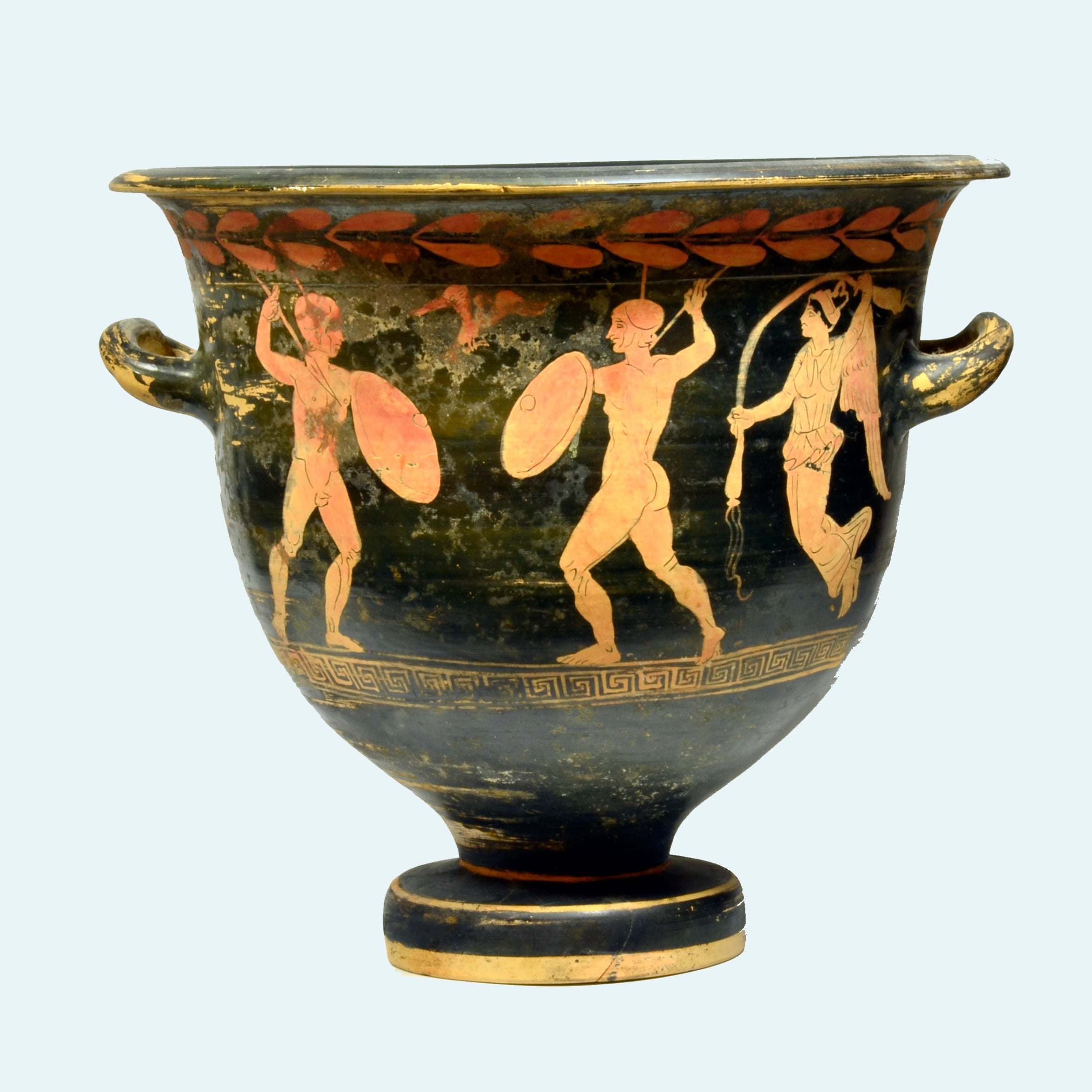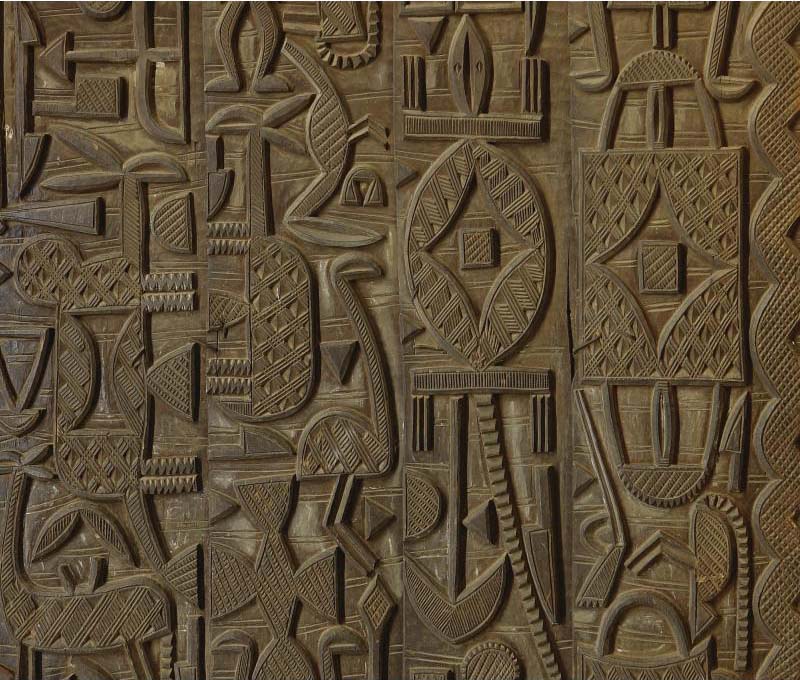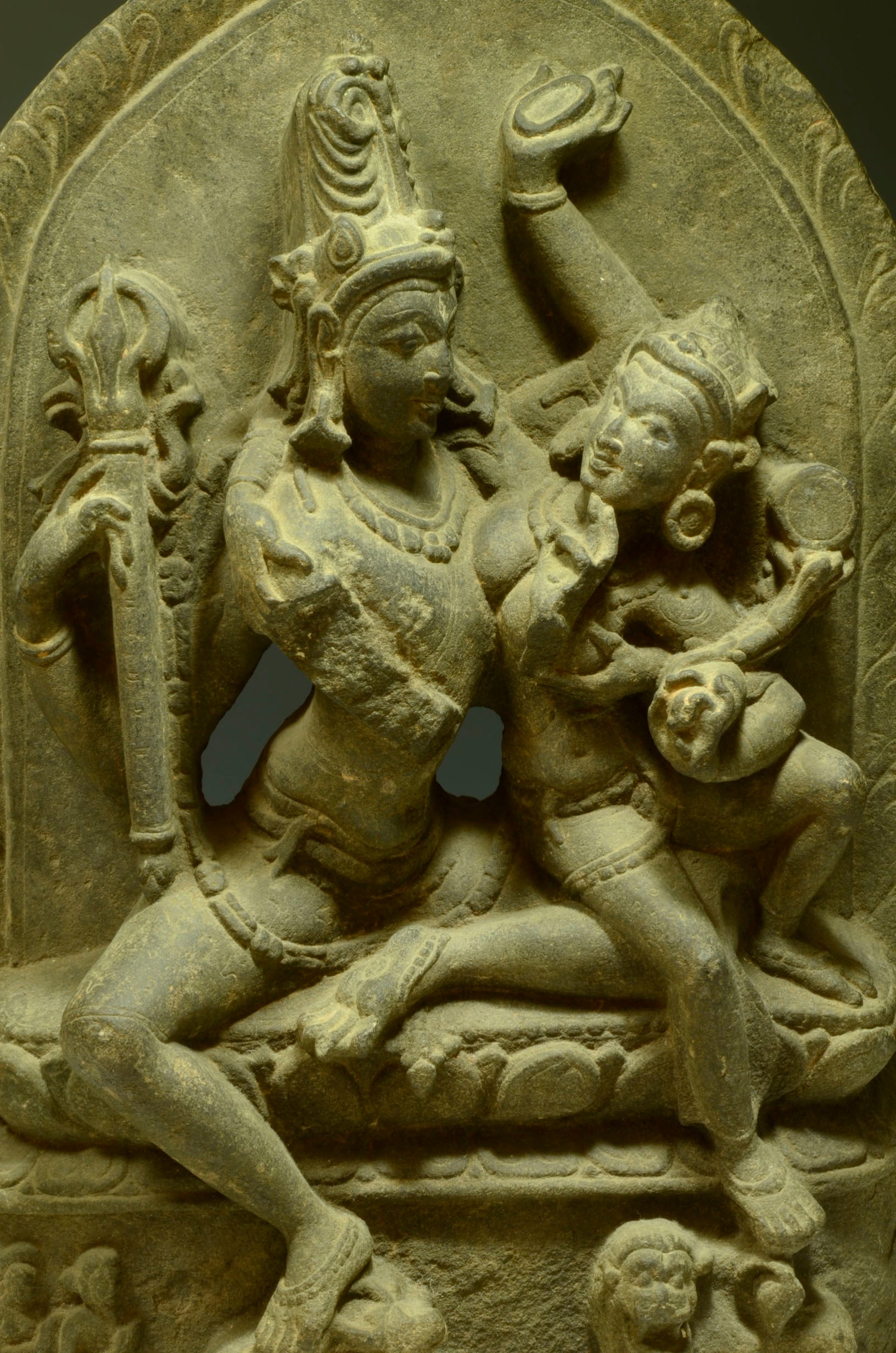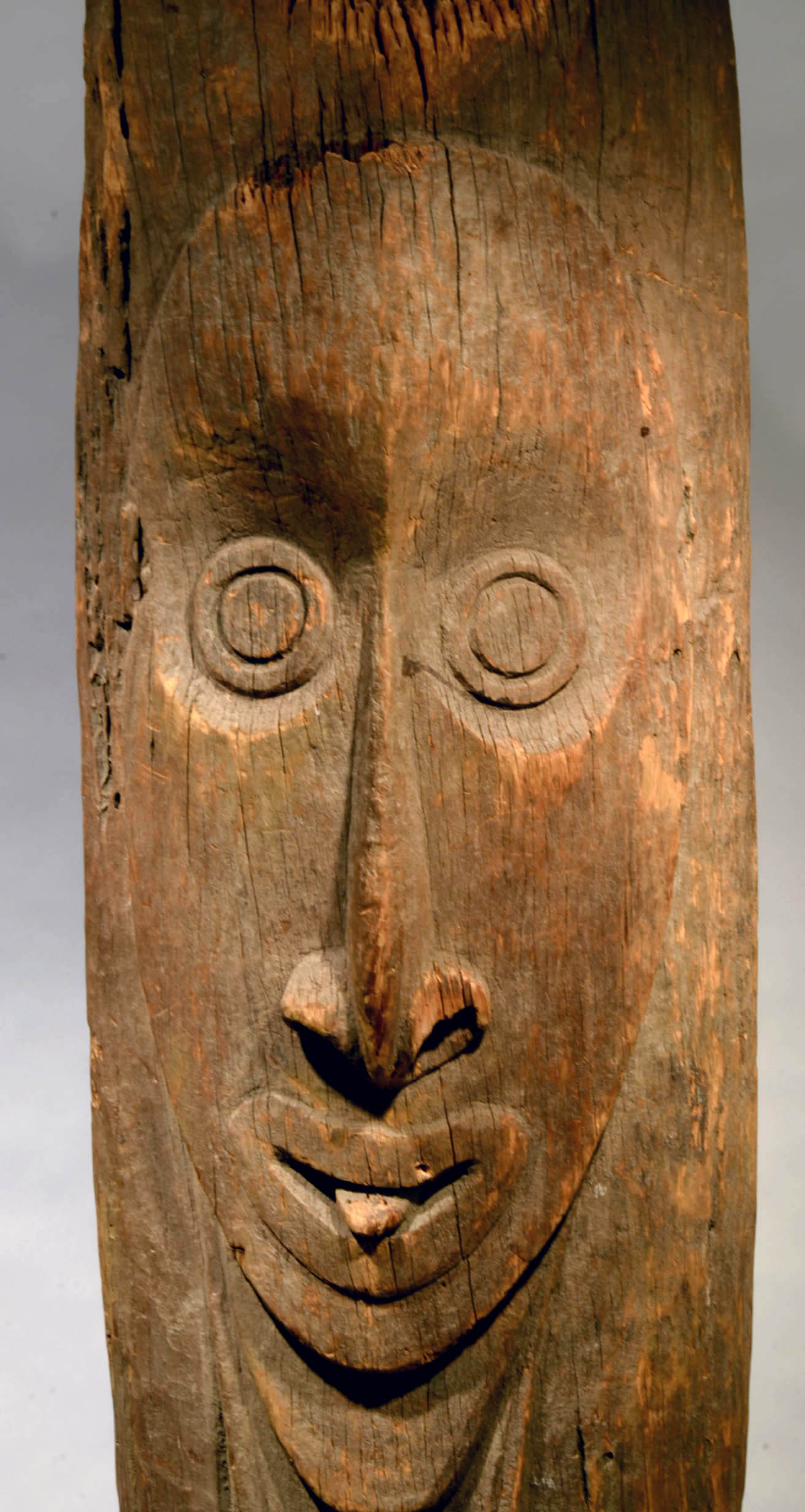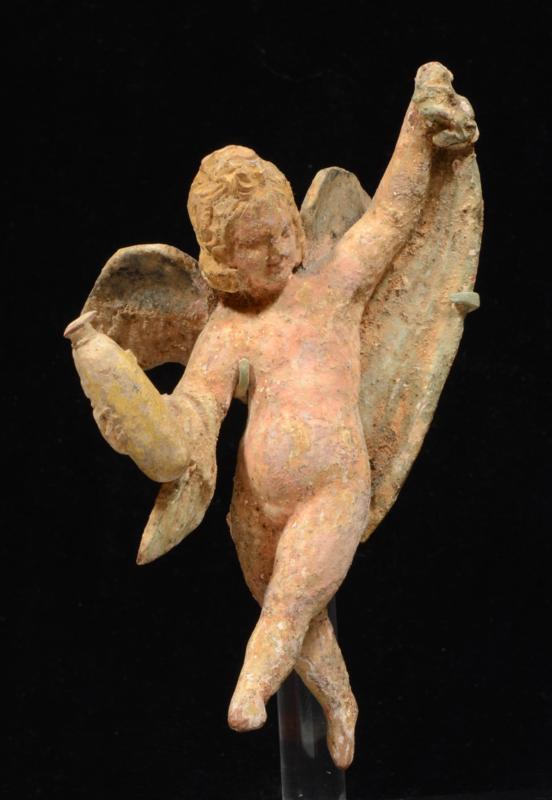Imposing Egyptian Alabaster Offerings Vessel
Recently acquired from the New York collection of R & H Kleinfeld, who acquired it in 1994; this rare alabaster vessel from the Early Dynastic Period, Dynasties 1 to 2, Circa 3100 to 2686 BC cuts an imposing form with the large height of 15 ½ inches and 5 ½ inch circumference. The curved, disk rim of the vessel quickly gives way to rounded shoulders that grow in circumference, until beginning to taper slightly above the middle of the vessel to an almost flat base with a similar circumference to the rim. Fashioned from a single large block of choice alabaster, this narrow and oblong vessel imitates its contemporary ceramic forms, with it almost perfectly resembling the form of an Early-Dynastic Period Wine Jar currently housed at the Metropolitan Museum of Art (Fig. 2). This particular vessel shape is known as a jar, which commonly held offerings for adornment or funerary purposes, with the ample opening and deep interior.

( AFE vase figure 1) (Fig. 2: Wine Jar, Early Dynastic Period, Dynasty 1, ca. 3100–2649 B.C., 30 11/16 in x 11 13/16 in (h. x diam.), Metropolitan Museum of Art.)
Comprised of the calcite alabaster that had enduring popularity in Egypt from Pre-Narmar to post-Cleopatra, this stone most likely came from the Hatnub quarries that were in use from the Early dynastic periods until the Roman Period and extracted by the highly advanced Ancient Egyptian art of limecuting (the met). Crafted while the first step pyramid for King Djoser was constructed in Gaza, this piece reflects the burgeoning mastery of stone cutting in both architecture and everyday life that emerged during the early dynasties (). Both the costly nature of its material and contents reserved these alabaster, alabastron vessels for the wealthy and upper class, making one of this size and quality of material and craftsmanship quite rare. The vessel’s most distinct feature is the large, abstractly shaped white mineral deposit containing three grey circular deposits and rust veining, almost resembling a geode in the middle of the vessel. Carved from a particularly citron-hued alabaster with opaque white and light yellow veining that vertically bisects the vessel. From the sides, one can uninterruptedly trace each vein from the base of the vase, up the side, over the disk top, and slightly down into the jug, testifying to the artist’s skill in carving this vessel from a singular piece of stone. As the white veins run down the front side of the vase, they become concentrated at the base, contrasting with its slightly darker hue, creating a crystalline effect and emphasizing the oblong form of the vase.

(Fig. 4: Mineral deposit) (Fig. 3: Vessel from the side)
With the spectacular natural features of the alabaster being decoration enough, the vessel is devoid of any pigment or etching, creating a minimalistic, yet imposing effect, which, combined with its svelte and simple structure, emphasizes the stone’s unique, natural beauty. The true magnificence of this vessel emerges from the harmony of natural and superb human craftsmanship


